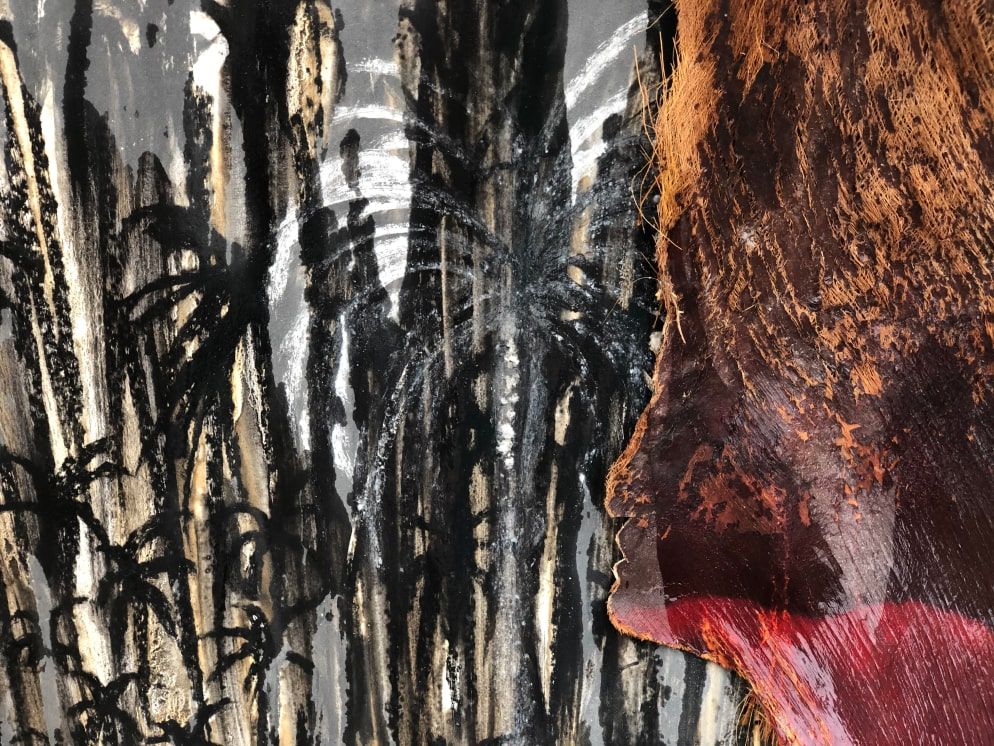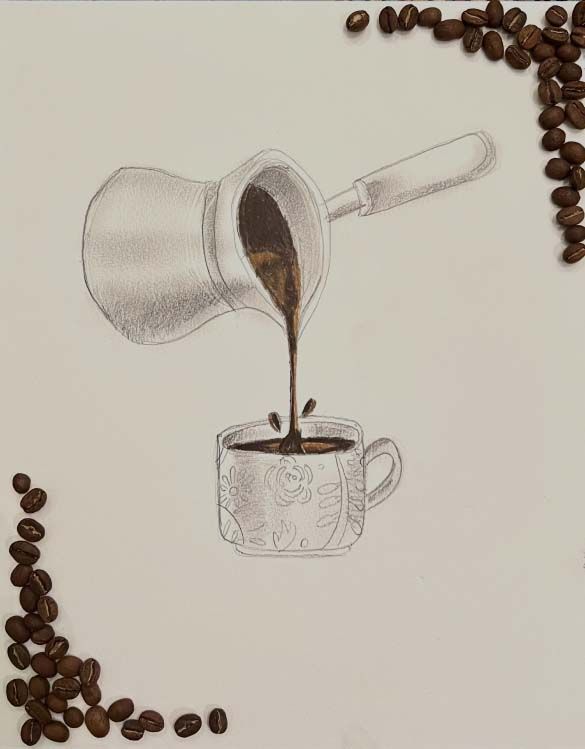An Artist with a Sustainable Flare
Cardboard artworks by Mohammad Al-Faraj.
“I often use and reuse natural and other materials found in Al-Ahasa and the cities I visit and combine them with children’s games and stories from people in large and remote cities. I do this as an attempt to create works charged with imagination and cases of coexistence between humans, nature and other beings, and the decomposition and decay that affects the relationship between them, with the belief that salvation is always in our hands….”

Meet our ‘theme-special’ featured Saudi artist Mohammad Al-Faraj, an experimental mixed media artist who takes inspiration from the natural world around him, creating stories through artworks that reuse, recycle and revive.
Known for his distinct earthy pieces sometimes literally using earth and soil, Mohammad Al-Faraj is a Saudi artist who recycles and reuses elements in his pieces, leaving them open to interpretation and reflection. Here we meet this artist, whose cover art is a homage to nature’s little gems, from the dragon fly to the “bulbul” bird, trees, and our own connection with the natural world.
Exhibited at Hayy Jameel, they are part of his cardboard sculptures from his multimedia installation Jasb Al’aesh (2021). The works were made by collaging cut-up boxes from foods that are imported to meet Saudi Arabia’s current demands, which have been changing over time as the country, the lifestyle and food practices evolve.
In the Gulf, a type of bird called the white-cheeked bulbul was always around when I was young. We would always see it and hear its beautiful song, and it could be raised to become your friend. This bird preferred to nest in lemon trees that were planted in abundance in Al-Ahasa, but in recent times, farmers have become overburdened with its cultivation because it is no longer economically feasible due to the import of foreign lemons, which are usually much cheaper. Therefore, the plantation of lemon trees went down, and the number of white-cheeked bulbul began to decrease, in addition to unregulated hunting and increasing hot weather. I wanted to pay homage to this sweet bird and other beings I grew up around, by collecting crates of fruits and vegetables, cutting them and shaping them into creatures and trees that are threatened by the import and export traffic.

Cardboard artworks by Mohammad Al-Faraj.

Cardboard artworks by Mohammad Al-Faraj.
The palm and the olive tree are the ancestors of all trees. I am very fortunate to be from a palm oasis, and I grew up around the farms there. I learned a lot from watching my late grandfather Abdullah take care of his palms and plant them, and I loved collecting branches and installing them to represent a story going on in my head.
Now I like to work with its parts, especially the discarded ones, and to restore life in it. Most of the shapes look like bones and fossils, so one of my collections I called “fossils of knowledge” because the palm holds sacred knowledge and we have forgotten how to communicate with it.
Sustainability is a term that doesn’t consciously come to my mind. I just work this way with these materials because it’s the only way that seems to be significant and profound. When I reuse a tree trunk or a garment, I rediscover the spiritual and material value, the memories of those who wore it, its look and feel. I feel that there are already many materials and things on this earth and it makes no sense to add more if we can reuse so much of it for free! This practice not only will help us and our planet to be healthier, but it is an unlimited, and an inexpensive source for creativity and imagination.
The palm and the olive tree are the ancestors of all trees. I am very fortunate to be from a palm oasis, and I grew up around the farms there. I learned a lot from watching my late grandfather Abdullah take care of his palms and plant them, and I loved collecting branches and installing them to represent a story going on in my head.
Now I like to work with its parts, especially the discarded ones, and to restore life in it. Most of the shapes look like bones and fossils, so one of my collections I called “fossils of knowledge” because the palm holds sacred knowledge and we have forgotten how to communicate with it.

Sustainable artworks with a traditional twist by Mohammad Al-Faraj.

Sustainable artworks with a traditional twist by Mohammad Al-Faraj.

Sustainable artworks with a traditional twist by Mohammad Al-Faraj.
As for the burning thoub piece, it is part of a group of works I am working on, bearing materials, writings, and drawings that draw inspiration from everyday life and folktales. Fire, coal and ash have amazing powers to change, and mud is the symbol of our ancient existence. Dates, coffee, water, leaves and clothes are all materials that interact with each other and carry profound spiritual and material values.


